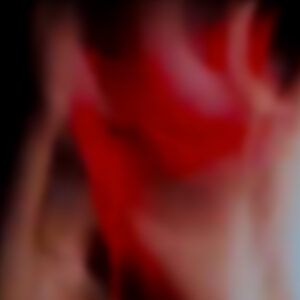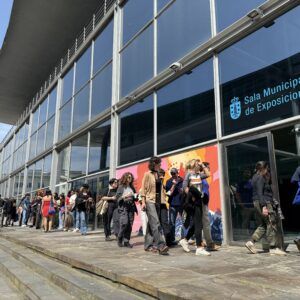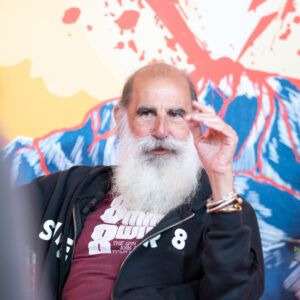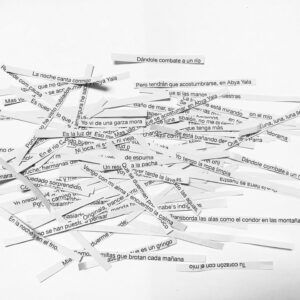This year’s (S8) will end on Saturday with the Wandering Projection, brought to us by the self-run laboratories Laia-Torre (Porto) and Mire (Nantes). A 16 mm screening will tour the streets of A Coruña thanks to this project, which blends art, technology, solidarity, camaraderie and political commitment. We spoke with representatives from both labs about all of this.
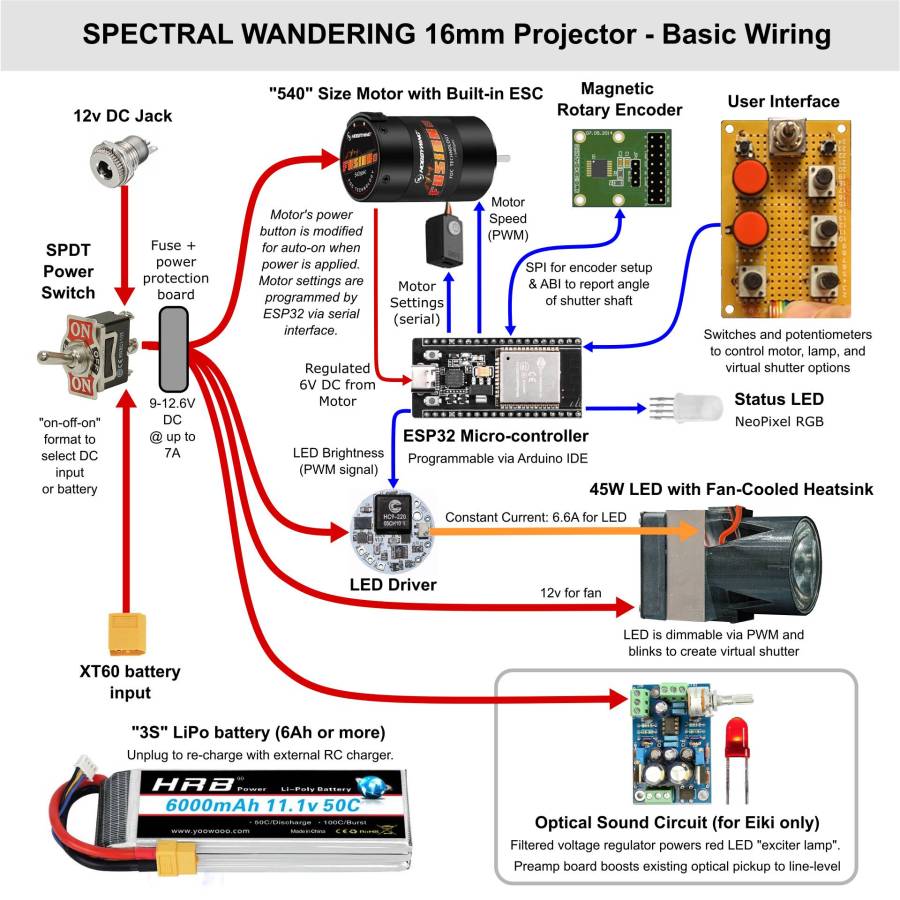
Where does the idea of the wandering projection come from?
Mire: Mire always loved to curate experimental cinema in new and unusual places. But with the evolution of the city of Nantes, finding new places became harder and harder. First we ran an outdoor venue, Le Jardin C, and did all sorts of crazy projects. But running a space is a lot of work and Mire decided to focus on other projects, amongst them was the festival Prisme. But right after Covid bringing everyone together in a room was not obvious to everyone, for many reasons. Organising outdoor and mobile events was an answer to this situation.
At the time, members of Mire had met other people who were organizing some pirate events, for similar reasons (either the pandemic, the rejection from art institutions, artist-run squats closings, gentrification and sanitization of public space, or all of them). Even Antoine, Mire member, started to screen his 16mm films and slides from his window during the COVID lockdown, as an alternative to the boom of streaming platforms.
We got very inspired by the sister practices that had developed at this time: the spontaneous street noise gathering aka Noise Bombing in Indonesia, the long walks of Concerts Dispersés, within fields and forest in the center of France, and the sound explorations in the catacombs of Paris by former ravers and artists… a so called “12V culture”, where car batteries, and later lithium, allowed to play weird music and to party almost anywhere. Those inspirations are all mostly focused on music and sound, so we thought, let’s try to make this for cinema! In parallel, we were also very much inspired by the origins of cinema : precinema and magic lantern, ambulatory nature of fantasmagoria shows, fairground cinemas.
Why is this a project developed by Laia-Torre and Mire specifically?
Laia-Torre: This project is developed by Laia-Torre and Mire specifically because it brings together our complementary lines of research within the Spectral project. Beyond the investigation of new devices for expanded cinema and the creation residencies, Spectral also includes the circulation of the work ECA (Expanded Cinematic Arts), and collaborations with venues or festivals.
For this specific part of the project, we chose to work in pairs — connecting two laboratories at a time with a festival context. For example, Filmwerkplaats and LaborBerlin collaborated in Oberhausen; Crater and Bal Lab presented at LUFF.
Now at (S8), we are bringing into dialogue Mire’s research of wandering with Laia-Torre’s thematic exploration of Primal Light. This led to the development of a portable, energy-autonomous 16mm projector: lightweight and adaptable, aligning perfectly with Laia’s residency proposal which explores both primordial light sources and projection in natural environments, using the surrounding landscape itself as a screen or support.
Throughout the project, beyond the programs, strong friendships have formed and it is from this complementarity and mutual care that this program emerges. Our practices converge not only in their technical and conceptual dimensions but also in their affective relationships.
Could you tell us about the process of creation of the devices? What were the main challenges?
Mire: There have been 3X10 days sessions of seminars, over a period of 1 year, gathering 12 people (7 from France, 5 international). To make up the team an open call was launched.
First of all the challenge was a human one, we had no idea how these people who did not know each other would get along and if the whole operation would lead to anything since the directions were kind of vague and required a huge commitment from the participants. So, a bit risky! Looking back it was a truly beautiful human experience
Then, we had some ethical/political issues. We discussed and decided collectively how the devices will exactly be, starting from the given directions that they should be reproducible, mobile (easy to transport, to set up and autonomous in electricity) and not exceed a budget of 1000€. In this process we encountered dilemmas such as the use of lithium 12V batteries or getting cheap electronic components from China through Amazon which does not exactly fit our ideal environmental/economical model. At the same time –and somehow to counterbalance this– we have been trying whenever it was possible to re-use discarded elements and generally through the project apply a philosophy of knowledge sharing through documentation, among other things.
Of course it has also been a technical challenge. For many of the artists involved it was the first time they went so far into DIY construction…for the Octoploc for instance there has been a chain soldering action! So it has been very intensive and required some adjustments after the prototypes were almost completed.
But the commitment of each participant and the complementary of skills within the team has been working very well at the end.
How is the dynamic of the projection? What will you do here in Coruña?
Mire: We are intending to take people with us for a walk.
The idea is to rediscover the environment in the light of projection spots discovered in the city. It should be a nice shared experience, contemplative and playful.
Could you tell us about the program you are bringing here? How did you choose the films?
Laia-Torre: Our idea for choosing the films started out as a sort of ping-pong between labs. Each lab had its respective film “baskets”, with a selection of films with certain rules: each film shouldn’t exceed the duration of 10 minutes, should be silent, and should correspond either to the theme of “Wandering” or “Primal Light” (or both). We also focused on finding a balance between black and white/colour and male/female parity.
This exchange of films became in itself a visual conversation between Mire and Laia-Torre, with each lab finding aesthetic and conceptual links between them as well as proposing other directions. We also had in mind that the selection should be visible on less than smooth and bright surfaces.


